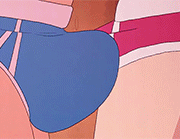|
What type of plants are you interested in growing? This poll is closed. |
|||
|---|---|---|---|
| Perennials! |
|
142 | 20.91% |
| Annuals! |
|
30 | 4.42% |
| Woody plants! |
|
62 | 9.13% |
| Succulent plants! |
|
171 | 25.18% |
| Tropical plants! |
|
60 | 8.84% |
| Non-vascular plants are the best! |
|
31 | 4.57% |
| Screw you, I'd rather eat them! |
|
183 | 26.95% |
| Total: | 679 votes | ||
|
The real question is whether your hydrangea is of the species that will actually change color. Hydrangea macrophylla, the bigleaf or mophead hydrangea, is pH sensitive, blue in highly acid soil (like 5-5.5 pH) and purple turning to pink as it gets more alkaline. There are other hydrangeas though, such as Hydrangea quercifolia and Hydrangea involucrata that pretty much stay whatever color they are, and those can sometimes have blue flowers. I have an Endless Summer macrophylla in the ground that makes a mix of purply-pink blooms with occasional flecks of blue that looks really cool, that's without soil amendments other than compost in naturally acid soil (about pH 6). I also have a Blue Bunny involucrata that makes super deep-blue flowers surrounded by pale blue-white bracts that looks amazing, again no amendments needed. Knowing your cultivars helps a lot. 
|
|
|
|

|
| # ? Jun 4, 2024 13:30 |
|
unprofessional posted:Are you growing them potted? Hard to do long-term, but you can get away with it for a season or two. Remember that they're perennial bushes. Pink/blue macrophylla hydrangeas are pH sensitive, so if you want blue blooms, you should supplement with some aluminum. Easiest potting solution is going to be any bagged potting mix cut in half with perlite, for drainage. A majority of bagged mixes do not include enough inorganics for proper drainage. I'm growing them in a big, 22-inch diameter pot. The cultivar I've bought is a Merritt's Supreme, macrophylla. They were already blue when I got them! I just want them to stay that way. I can live with pink flowers, but blue would be my favorite. Chelb fucked around with this message at 22:37 on Apr 3, 2016 |
|
|
|
I was a little drunk while processing some cotton bolls a few days ago, got cheeky, and planted these 5 year old cotton seeds ironically. Today they sprouted. I'll be damned.
|
|
|
|
Marchegiana posted:Speedwell is a perennial, henbit is a (notoriously well-seeding) annual. They're both pretty easy to deal with if you know how to remove them. Hint- you need a digging tool. I usually gather up the plant to identify the base of it but whatever you do DON'T pull it- use a hori-hori (I guess a trowel could work too) to work around the base and scoop the roots out of the ground. Once it's out I find I can shake the soil off the roots pretty easy and they compost well. My original idea was to use herbicides or something similar to "carpet bomb" the infested areas. It seemed easiest. In retrospect, though, I am coming around to your thinking; after I consider the time spent shopping, mixing, applying, cleaning, and then shaking my fist in despair, I'm thinking your simpler weed-pulling scheme makes much more sense. Besides, it's sort of meditative. Love, Vitalis
|
|
|
|
I'm having a devil of a time with my herb planter. It's currently rosemary, greek oregano, and creeping thyme, but the thyme and oregano have been experiencing some die-back. I'm assuming I've been watering them too much, but I also tried giving them some regular old Miracle Grow around that time. Any tips on care for this kind of planter? Rosemary is doing great but I feel like I'll need to grab new thyme and oregano plants this summer. Also, pictures of my succulents: [  Aloe Aristata circa 2011-2012  Same plant, 4-5 years and many pups later  Same planter, one of the pups  Random succulent planter  One of my propagations, random leaf plucked from a friend's plant. Smugworth fucked around with this message at 22:26 on Apr 9, 2016 |
|
|
|
Smugworth posted:I'm having a devil of a time with my herb planter. It's currently rosemary, greek oregano, and creeping thyme, but the thyme and oregano have been experiencing some die-back. I'm assuming I've been watering them too much, but I also tried giving them some regular old Miracle Grow around that time. Any tips on care for this kind of planter? Rosemary is doing great but I feel like I'll need to grab new thyme and oregano plants this summer. I've been having a similar issue with my herb planter - my transplanted sage and rosemary did well for about two seasons, but started to die off, starting in the center of the plant, whereas the oregano and thyme are overflowing their sections. I wonder if it has to do with having slightly different moisture/light requirements for all of them and the planter is not great for all of them together? FWIW, I don't water at all (my "planter" is a raised bed in partial shade, and we get a fair bit of rain, so I don't usually add additional water). The combo of your dying/thriving plants seems to be directly opposite mine, which lends credence to the theory that thyme and oregano are a good match in terms of resource use, and rosemary has different needs. I doubt it's a fertilizer issue, herbs aren't supposed to be heavy feeders, which is why planters are recommended. My plan is to get a secondary planter for rosemary and sage and move them to an area with a bit more sun and a bit less water. Rosemary especially doesn't need much water - its almost needle like leaves are good for preventing moisture loss.
|
|
|
|
I've definitely killed a rosemary or two by over-watering. The rosemary is a recent addition earlier this year but it's been doing well for the last month or so. I took out a fennel plant that was in the planter when it was gifted to me because it was getting huge and noticeably causing etiolation in the oregano and thyme, but that thing was a water hog and let me know it needed more water by wilting. I wonder if it sucked up excess water? I really need to just sit down and do more research into the needs of these plants, I just thought I read somewhere they're all Mediterranean plants and like less water/more light. They were really doing well until I moved the rosemary in. Hopefully when it really starts warming up they'll push out some strong new growth.
|
|
|
|
I'm looking for help identifying a crab apple tree that my grandparents had. No pictures, the tree has been dead for 20 years. The apples were the size of golf balls, with a fairly deep red skin. The thing about these apples is that they were SOUR. Even when ripe they had an awesome sour taste. If I had to remember the flesh I'd say it was a light golden colour but not 100% sure. I'm in Winnipeg, so zone 3. The tree was quite hardy. I'd like to get one to plant in the same location as the old tree stood. Vague, I know. Any hints or direction would be greatly appreciated!
|
|
|
|
Veinless posted:I'm looking for help identifying a crab apple tree that my grandparents had. No pictures, the tree has been dead for 20 years. Do you remember what colour the flowers were? There are a decent number of bigger-fruited red crabapple varieties, and crabapples of all varieties are generally pretty sour. Even if you can't match the exact variety, you should be able to find one that's a reasonably good substitute. Try asking your local tree nursery; if they can't identify the variety itself they should be able to point you toward a substitute that might suit.
|
|
|
|
EagerSleeper posted:Congratulations! Those seedlings seem pretty good and healthy! You can let them grow some true leaves to see which ones are worth keeping and which ones to thin out. Even if you don't manually thin some out, the seedlings will eventually do so themselves if overcrowding is an issue. Thanks! I selected a bunch of the strongest looking plants and repotted them. They are coming along nicely, and on the newest leaves i'm starting to see the characteristic toothed leaves that i think look awesome.  Threw away a bunch of them, plenty of fine specimens were left too, but the ones i kept are more than enough. Kind of neat that they come in two varietes, some with purple stems and others with green ones. When they bloom, the green-stemed plants will get white flowers and the purple-stemmed ones will have purple-tinged white flowers with purple in the inner parts of the petals. Falukorv fucked around with this message at 23:40 on Apr 26, 2016 |
|
|
|
So I am planting my garden for the year and I have a question: What is this plant? I'm pretty sure a squirrel or a bird planted this in my planters sometime since last fall and I have no idea what it is. (I sure never bought it) Could anyone help me out? Should I rip it up or just let it chill?
|
|
|
|
That is a sapling of some fruit tree.
|
|
|
|
I figured tree, but I'm in Chicago, so I don't know what fruit would be around. Maybe the neighbors threw something in there.
|
|
|
|
holttho posted:I figured tree, but I'm in Chicago, so I don't know what fruit would be around. Maybe the neighbors threw something in there. That didn't come from a seed, that is a trimming from a tree that rooted.
|
|
|
|
I think this might have been pasted over in the small question sticky, I believe this is the closest SA has to a lawn care thread. Are professional lawn care services like Trugreen a worth while investment? I would prefer to spend my own time and labor spreading poo poo on my lawn but I want to make sure I spread the right fertilizer at the right time. Is choosing the right fertilizer difficult? Like when I look at the Home Depot, it appears it's all fertilizer + <certain weed>. I don't yet have a weed problem, I have a thatch problem right now and I want to make sure it doesn't become a weed problem. I think I have two solutions to my thatch problem, either a $20 thatch rake or lawn aeration. Lawn aeration could be done with a $90 rental from Home Depot, or a $190 treatment from Trugreen. . . The problem with renting an aerator is trying to load a 300lb machine in the back of my Acadia (will it fit? can I lift 300lbs that high on my own?) and keeping the carpet clean. My biggest fear with renting an aerator is that I don't know how much of a pain in the rear end it is to run the machine. I don't own a lawn tractor so a tow behind plug aerator is out. I see there are manual push-reel style aerators or stab in the ground style, stab in the ground seems like it would be a monumental pain in the rear end to cover the whole lawn. . . I wouldn't mind wearing aeration shoes while mowing but the only reviews I have seen so far seem to be claiming they are either snake oil, or you have to wear and use them every single time you mow the grass. Ultimately, I don't believe aeration is necessary. Sure, it might solve my thatch problem, however I think a thatch rake will work better. It has been at least 2 years since the lawn was aerated (I don't know if the previous owner aerated, but I doubt it) and I'm under the impression that aeration is a process that is just not really necessary for most lawns, mainly because I never see other houses aerating their lawns. My kids are not old enough to play outside so I'm fairly certain I don't have a soil compaction problem, I just don't want to take a shovel to a good part of my yard to check for sure yet.
|
|
|
|
Does your lawn look bad? Adding nitrogen is going to make the thatch worse so if you're prone to it, I wouldn't fertilize without a reason. Every ounce of fertilizer that you add is more that can find its way into local rivers and lakes, so I'm just opposed to fertilization in general, so take my opinion with a boulder of salt. 
|
|
|
|
Crotch Fruit posted:I think this might have been pasted over in the small question sticky, I believe this is the closest SA has to a lawn care thread. All those fertilizer/herbicide combos are generally called "weed and feed". Personally, I don't like them since they also kill clover, which is beneficial. Keep looking, they do make plain fertilizer. Thatch isn't a problem. It's just the dead grass from last year. You shouldn't notice it by June. If you want it gone, get a thatching rake. As for if you need aeration or not, that depends on how compacted your soil is, like you mentioned. If you have really bad clay or if you have cars driving on your lawn regularly, then I would recommend it. edit: If you really want to know what kind/amount of fertilizer to add, then do make soil analysis kits, but grass is pretty easy to grow. For the kits, basically you box up a bit of your soil from several spots in your yard and ship it off to a lab. I would only recommend it if you're having serious trouble growing grass. kid sinister fucked around with this message at 18:18 on May 5, 2016 |
|
|
|
I am not a book posted:Does your lawn look bad? Adding nitrogen is going to make the thatch worse so if you're prone to it, I wouldn't fertilize without a reason. Every ounce of fertilizer that you add is more that can find its way into local rivers and lakes, so I'm just opposed to fertilization in general, so take my opinion with a boulder of salt. kid sinister posted:<snip> Not Wolverine fucked around with this message at 20:30 on May 5, 2016 |
|
|
|
Crotch Fruit posted:I don't have a bagger on my mower so I am constantly mulching and adding to thatch, I assume I should be safe getting rid of as much thatch as I can rake. Quick thoughts: How much thatch do you have? less than a half inch is totally fine. How frequently do you mow and how much of the blade do you take off? Try to take off only 1/3 of the blade, that should be little enough that it can decompose well. I've got a mulching mower as well and I've never had a problem with thatch. I'm curious about how you got to where you are, do you use pesticides or something? Worms/bugs/whatever should be enough to take care of the trimmings.
|
|
|
|
Thatch is at least a half inch thick, closer to 3/4" to an inch in spots. I mow with mower at max height approximately once a week, I would believe I am removing less than 1/3 of the grass blade but I admit I am terrible at estimating that. I am also curious about how I got here, for chemicals I applied fungicide last summer after taking a sample of grass to a nursery. I also applied Scott's weed and feed fertilizer last fall. My lawn was also embarrassingly tall last winter. I am certain the first mowing took off at least a third or even half of the blade of grass, but I have been sticking to a weekly less than 1/3rd cut since.
|
|
|
|
It sounds like you're doing everything right, a thatch rake won't hurt anything. I've got to confess: I'm kind of curious about your lawn, any chance you could post a picture? I'll take this opportunity to plug your county's master gardeners, they'll probably have some good advice since they know your local ecosystem. Call up your state university's extension office and ask for the master gardeners; at least in my state they can count the time they take helping you as part of their required volunteer hours so they love answering questions.
|
|
|
|
Crotch Fruit posted:Thatch is at least a half inch thick, closer to 3/4" to an inch in spots. I mow with mower at max height approximately once a week, I would believe I am removing less than 1/3 of the grass blade but I admit I am terrible at estimating that. You might try mowing less, on a two-week schedule or later. Mowing less will mean the grass should be healthier and less grass cuttings contributing to the thatch. Sometimes the solution to lawn problems is to leave it alone and stop repeatedly cutting off the main actively growing part of the plant.
|
|
|
|
Do you suppose your thatch problem could've been caused or exacerbated by the fungicide application? At the very least, discouraging fungal growth also discourages the breaking down of lignins, since fungi are by far the most effective at this (as far as my understanding goes). Something like 30% of thatch is composed of lignins, and dry thatch in particular takes a very long time to break down.
|
|
|
|
Crotch Fruit posted:I also applied Scott's weed and feed fertilizer last fall. Uhh, where do you live that weeds are a winter problem?
|
|
|
|
Turf management is exceptionally complicated and I think it's fair to say that nobody here is going to have a better understanding or advice than Colorado State University Extension's infosheet: http://www.ext.colostate.edu/mg/Gardennotes/551.html
|
|
|
|
unprofessional posted:Turf management is exceptionally complicated and I think it's fair to say that nobody here is going to have a better understanding or advice than Colorado State University Extension's infosheet: http://www.ext.colostate.edu/mg/Gardennotes/551.html ummmmm excuse me sir and or madam: http://www.extension.umn.edu/garden/yard-garden/lawns/thatch-control/
|
|
|
|
Shame Boner posted:Do you suppose your thatch problem could've been caused or exacerbated by the fungicide application? At the very least, discouraging fungal growth also discourages the breaking down of lignins, since fungi are by far the most effective at this (as far as my understanding goes). Something like 30% of thatch is composed of lignins, and dry thatch in particular takes a very long time to break down. kid sinister posted:Uhh, where do you live that weeds are a winter problem? Pics! First two were taken 4/12. Notice my neighbor has a dog dropping fertilizer bombs on my grass. . .  Closeup:  Next three were taken this afternoon, the first picture is of a patch that I used a thatch rake on yesterday:  I raked to the left of my shadow in this image:  Closeup:  At this point, especially when I look at the pictures from April, I'm questioning if thatch is really a problem. I will say, when I used the rake I was able to pull up tremendous amounts of thatch on each pass in some areas and no that in other areas. It's hard to get a good picture, but I think when I walk around I can clearly see a line of where I stopped raking.
|
|
|
|
Don't be discouraged yet, we have a terrible lawn and regular raking has improved it. The effects seem to take a little time to show up: it seems the grass is able to spread to the freshly raked areas and fill in over the course of a few weeks. I raked a patchy area for a couple weeks last fall and this spring it came back much more evenly. I refuse to add anything to our lawn (I would rather spend our money on more interesting plants), but I don't mind putting in some effort to make it look nice. Is it possible to have a nice looking, additive free lawn?
|
|
|
|
Oh good, lawn questions! At this time last year, my back yard was nonexistent due to construction. When the machinery departed I was left with a small city plot of clay. I seeded perennial ryegrass and dutch clover, which came up quite well with the exception of a couple super hard packed areas that are still pretty sparse. Anyway, one of the reasons I wanted a heavy clover lawn is to attract honeybees and other pollinators. It's working pretty well, I have a yard full of white clover flowers and honeybees. The downside is that I can't mow until the clover goes to seed. This means that I have 12-24" ryegrass with developing seeds coming through the clover all over the place. So far the city hasn't issued a citation, but with that aside, what do I do when the clover goes to seed? I have read that cutting that much off grass can seriously damage it. Do I wait until the rye goes to seed before acting? What does it look like when the rye seed pods are ready? How do I cut it? What do I do in the future so I can have clover flowers for the bees but not an apparent prairie restoration area?
|
|
|
|
Stultus Maximus posted:Oh good, lawn questions! What's the highest setting on your mower compared to the clover height? Try to find a height setting that the clover can still flower, yet the rye still gets mowed. As for what to do once the clover seeds itself, mow it and don't bag the mulch. If you let most grasses get too tall, they will shade out the surface and force neighboring grasses to grow up instead of out, resulting in a patchy lawn. If you then cut a lawn that tall, you tend to end up with staggered grass bunches with yellowed centers since the stalks got so long. By the way, you'll get thatch once you cut that rye too, from the left over seed stalks.
|
|
|
|
kid sinister posted:What's the highest setting on your mower compared to the clover height? Try to find a height setting that the clover can still flower, yet the rye still gets mowed. As for what to do once the clover seeds itself, mow it and don't bag the mulch. The clover will flower even if I cut it regularly? I always cut on the highest setting, regardless. Also, rye is the only grass on the lawn this year, so growing "out" isn't gonna happen. I'm overseeding with fescue and red and crimson clover in the fall so I'll remember the shading thing next year.
|
|
|
|
What's the best way to deal with little flying bugs on indoor plants? They're slow and easy to kill, but they keep coming back onto the mint plant.
|
|
|
|
I moved into a new house recently, and the front of the house is barren with zero plants aside from the yard grass. It's very sad and barren looking. There's already mulch there like there were plants at some point but there's nothing now. Here's the catch, and probably why there are no plants, there's a HUGE evergreen in front of the house which means my entire front yard is in 100% shade all day every day. What sort of yard plants don't mind eternal darkness and don't need a lot of upkeep?
|
|
|
|
What zone are you in? Or tell where you're located.
|
|
|
|
robotindisguise posted:What zone are you in? Or tell where you're located. I'm in SE Nebraska, on the line between USDA zones 4 and 5 according to a quick Google search.
|
|
|
|
Get some hosta and ferns. Hosta are super hardy, perennial, very attractive, and don't care about light. Ferns and mosses are also shade lovers as long as there's adequate moisture.
|
|
|
|
I've got a tree in the backyard that forks from the trunk in three directions, creating a hollow space in the middle that collects rainwater; it stays there for days sometimes. This can't be healthy, right?
|
|
|
|
vonnegutt posted:Get some hosta and ferns. Hosta are super hardy, perennial, very attractive, and don't care about light. Ferns and mosses are also shade lovers as long as there's adequate moisture. Everyone I've asked IRL is also on the hosta bandwagon. Maybe that'll be next weekend's project.
|
|
|
|
Hosta are awesome, there's about 20 bajillion different varieties too so you can fill in with a ton of them and they don't look like an undifferentiated sea of green. Heuchera are also really cool shade lovers, and come in an even wider variety of colors than hosta. If you want flowers Astilbe are a good choice, and there are several ground covers that do well in shade too like Ajuga reptans and Galium odoratum.
|
|
|
|

|
| # ? Jun 4, 2024 13:30 |
|
jackpot posted:I've got a tree in the backyard that forks from the trunk in three directions, creating a hollow space in the middle that collects rainwater; it stays there for days sometimes. This can't be healthy, right? I think it could lead to rot down the line, but there isn't much you can do if it's at the base of the tree. You might want to throw mosquito dunks in it if it's full of larvae.
|
|
|



























